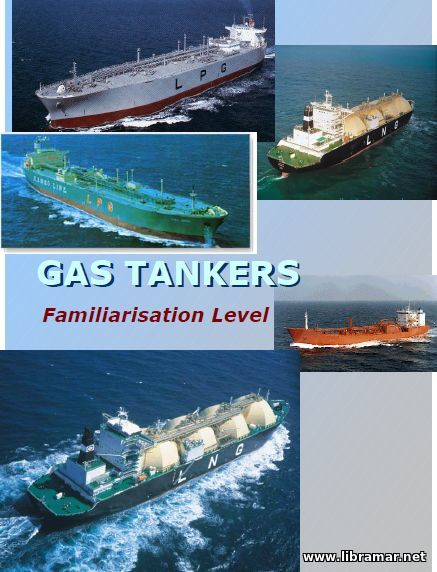 The present training course is aimed to help the key ratings and officers that have not previously served on board LG tankers. The book covers all mandatory minimum training requirements as prescribed by Regulation V/1, paragraph 1.2 of the STCW-95; it also includes basic pollution-prevention and safety precautions and applicable procedures, layouts of various types of liquefied gas tankers, types of transported cargo, their handling equipment and hazards plus the general sequence of operations and gas tanker terminology.
The whole training material has been arranged in two halves; the first part of the course providing some basic safety training for ship officers and ratings, while the second part provides the additional technical training for officers, masters as well as all others having immediate responsibilities for handling of cargo/equipment.
The main portion of the course starts with listing the most important stages in the LNG transportation by ships and some historical information on the development of liquefied gas handling, followed by the terminology used, properties of the liquefied gases and hazards associated with their transportation, types of gas carriers, cargo handling equipment and instrumentation etc...
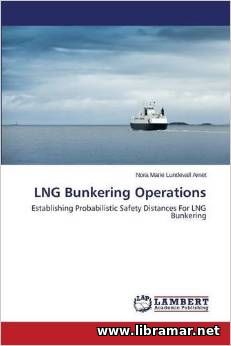 This training publication was prepared and released by the NTNU-Trondheim in order to establish probabilistic safety distances for LNG bunkering operations. The main economical and environmental benefits of using the LNG as marine fuel oil are widely recognized within the shipping industry. Today, construction of the infrastructure relating to the LNG bunkering is rapidly developing, responding to the constantly growing industry.
Numerous ports are currently preparing to supply liquefied gas fuel; however, there are some uncertainties related to the process of bunkering as well as to the operational safety. Recently, there were some research works conducted to get the available LNG bunkering solutions standardized, including launching of the related ISO guideline and RP by DNV.
Subject documents were mainly focused on the operational safety of bunkering, and on establishing of the safety zones; since very high risk is implied in the vicinity of the bunkering operations, and ferries (the main customers for the LNG fuel) have passengers most of the time, who are not allowed to present during such operations, the limitations imposed by the current regulations reduce the functionality and, consequently the competitiveness of LNG - that is why such fuel is a bit problematic for the ferry shipping companies...
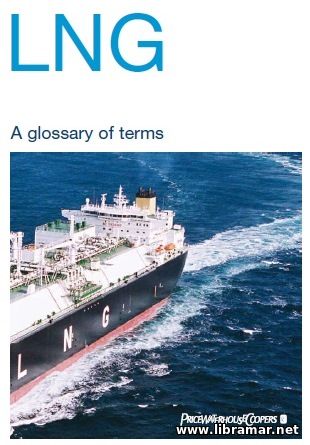 Since LNG are playing a very important part in today's world's energy mix, the professionals of the industry must be familiar with liquid natural gases terminology. The changing and constantly growing nature of LNG implies that its language brings together terms from the worlds of technique, finance, trading, utilities and many other sectors, not only from shipping and gas spheres.
The present Glossary is intended to provide a comprehensive guide to above mentioned terms. Like any other language guide it is sometimes fascinating and intriguing. It will be of great use to a very broad audience - chief executive officers, traders, accountants, tax consultants, regulators, and others -bringing together technological, commercial, engineering, accounting terms from both inside and outside the LNG sector.
This Glossary was published by PWH together with the Petroleum Economist Ltd and shall be treated as a sort of contribution to promoting transparency within the industry and for better understanding and knowledge in the global shipping industry. The glossary is excellent and maybe the best one available on the LNG transportation as it was specifically developed for this particular area of the maritime industry.
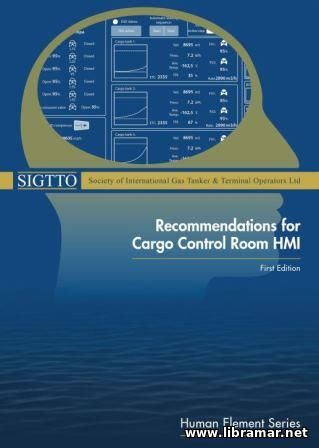 The present publication was released to provide recommendations relating to the HMI, standing for the human-machine interface in terms of applying the ergonomic design, since the effectiveness of the design of the display will eventually improve the overall user-friendliness of the whole system and associated equipment. The possibility of the human error may be significantly reduced, and the situational awareness, in turn, will be enhanced.
First of all, the role requirements and the operational philosophy shall be clearly defined in order to reach better and deep understanding of the control functions of the system. In fact, it is this understanding on which the whole content of this volume is based; it is highly recommended that the operators are duly supported with the proper design process to make sure that the operation is safe and smooth.
The ship owners are therefore encouraged to work closely with all parties involves including but not limited to the designers of the systems, engineers of the class societies, as well as the ship yards for creating the HMI that would provide the desired functions, and the development of the shipboard cargo control room shall have the aforementioned philosophy implemented as necessary.
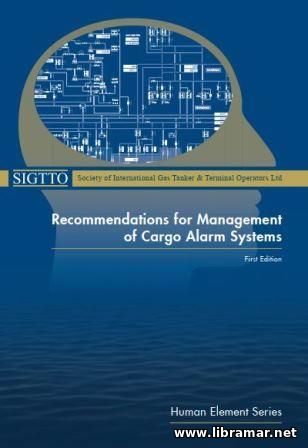 The authors of the present publication released by the world respected SIGTTO organization recommend that the alarm management philosophies are implemented for the cargo alarm systems of the modern gas carrying vessels. Nowadays, the subject systems can actually be set up with the endless number of alarms, and the huge number of alarms can be generated nearly simultaneously, should any abnormal condition take place.
In the industry, this is usually called alarm flooding. This condition can eventually disable the entire alarm system, reducing the effectiveness of it as the information source, and eventually leading to the incident. There are some other alarms with the potential to deduct from the efficiency of the shipboard alarm system, for example the stale and chattering alarms. It is critically important for the operator to be able to rapidly check the cargo system status together with all safety elements.
Also, the information available to the operator of the system, shall be duly grouped for easier reference, enabling him or her quickly react. The alarm management shall be treated as the systematic process covering all common issues and addressing all important aspects of the system design and maintenance, as well as the periodic audit and training of the personnel involved.
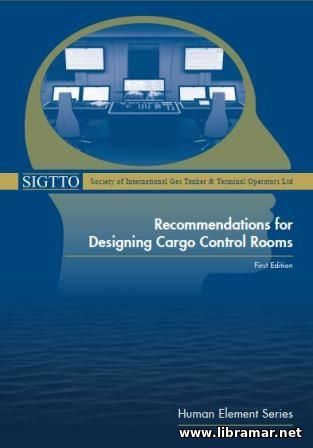 This official SIGTTO publication was prepared and published for those willing to get some professional advice and guidance on the design of the CCS, or Cargo Control Rooms, of the vessels carrying liquefied gases. It shall be noted that the recommendations contained in the pages of this volume shall apply only to the new ships, and not to the existing facilities.
However, the owners of the vessels in service might treat this book as providing guidance for the future major upgrades of the cargo control rooms on their gas carriers. The main body of the document is arranged in two parts, the first part providing some introduction and defining the scope, plus listing some key publications used when compiling this guidance.
The second part of the book covers the framework for the design process, namely clarification, analysis and definition, conceptual design, detailed design and, finally, operational feedback. Note that there is also a compact glossary of the terminology used throughout the text, for better understanding. Have a look in this concise document if you are interested in the design of the CCR of the modern gas carriers since it will provide you with everything one would need to understand the idea.
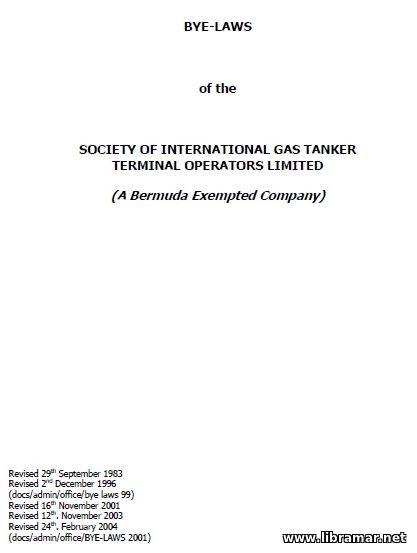 The legal publication officially released by the SIGTTO, standing for the "Society of International Gas Tanker Terminal Operators Ltd". The main body of this document has been arranged in seventeen sections called articles. The first articles in the opening one and it addresses name, offices and definitions, while the second article is titled "Purpose, powers and activities" including prohibited activities. The third articles deals with shares, covering share capital, registration of members, transfer and purchase of shares.
The next article deals with membership and eligibility including associate membership, admission, expulsion. Then there comes an articles on meetings of members covering the quorum, voting matters, notices and representation. The following article "Assessed capacity" concentrates on computation and records of assessed capacity. The remaining articles deal with dues and assessments, officers, directors, working committees, accounts and audit, indemnification, alteration of bye-laws, interpretation, winding up, seal of the company, and forms A and B. Subject blank forms are contained there at the end of the document. The must-have one and a good reference.
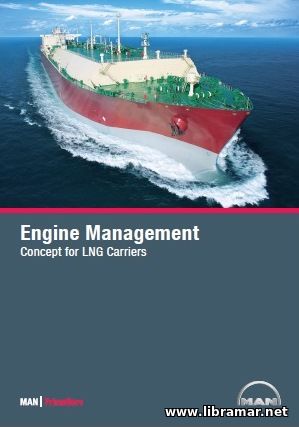 As the only type of commercial vessel, Liquefied Natural Gas carriers have in the past many years maintained the steam turbine as their preferred propulsion system. This trend has persisted despite the fact that all other types of commercial vessels changed to the more efficient diesel engines in the 1970s, as a consequence of the rising fuel prices and increased environmental awareness.
Moreover, diesel engines have also proved their reliability during many years of operation. The LNG carrier did maintain the steam turbine as its propulsion system because the natural evaporated boil-off gas from the cargo is available anyway, and because no other solution for the use of boil-off gas has been made available, at that time. There are, in principle, two ways of exploiting the boil-off gas, it can be burnt in a boiler, gas turbine or dual fuel diesel engine and provide power for the propulsion of the vessel, or the boil-off gas can be reliquefied in a reliquefaction system and returned to the cargo tanks. The reliquefaction of the boil-off gas from the LNG cargo makes it possible to increase the cargo quantity delivered to the customers, instead of using it as fuel, and to install more efficient propulsion systems on LNG carriers.
An LNG carrier is a special-purpose ship in which sophisticated technology is used to transport liquefied gas, a highly flammable cargo. Safety is, of course, paramount, as is the reliability and availability of the propulsion system of such a ship, because these factors influence the whole supply chain from the well to the consumer.
|







